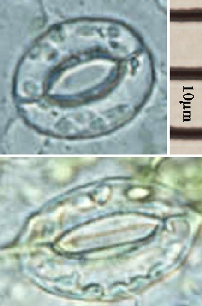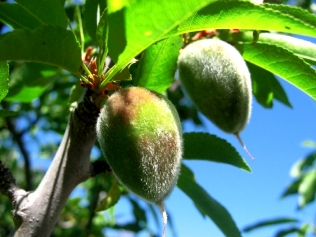Nutrition
Photosynthesis
Prunus dulcis is a plant, so it is
autotrophic. Being autotrophic means that is creates its
own food via photosynthesis. Nutrition of Prunus
dulcis relies on its own natural resources in its surrounds
and itself.
Photosynthesis is a process
which uses the sunlight's energy to produce sugar for the plant.
The general equation for photosynthesis is:
water + carbon dioxide ---> sugar + oxygen

In order for the photosynthesis to take place the plant needs to obtain water through its roots along with sunlight and carbon dioxide through its leaves. The plant obtains its sunlight and carbon dioxide through the surface area of its leaves. The leaves of the plant contain photosynthetic cells which allow the passage of sunlight, but they also contain cells called stomata. The stomata allows the passage of carbon dioxide and oxygen through the leaves. Carbon dioxide and oxygen are necessary for transfering to and from the plant but the stomata cells also release a lot of water through this process which is sometimes a negative effect.
Since the stomata release water the roots need to continuously replenish the plant with a supply of water. The roots absorb the water but the question is how does the water get to where it is needed for photosynthesis to take place? Water is transported throughout plants by cells called the xylem.
 When
sunlight emits on the leaves, carbon dioxide flows through the stomata, and
xylem cells bring water up to the plant from the roots, photosynthesis
can take place. The plant creates the sugar it needs
to eventually make ATP and releases the oxygen it creates
through the stomata. The plant stores the sugar for energy
and transfers it throughout its body to where its needed via the
phloem.
When
sunlight emits on the leaves, carbon dioxide flows through the stomata, and
xylem cells bring water up to the plant from the roots, photosynthesis
can take place. The plant creates the sugar it needs
to eventually make ATP and releases the oxygen it creates
through the stomata. The plant stores the sugar for energy
and transfers it throughout its body to where its needed via the
phloem.
If your interested in other plants that use photosynthesis for
their nutrition such as
the chocolate tree and
the sweet violet.
Find out how we have so many almonds
